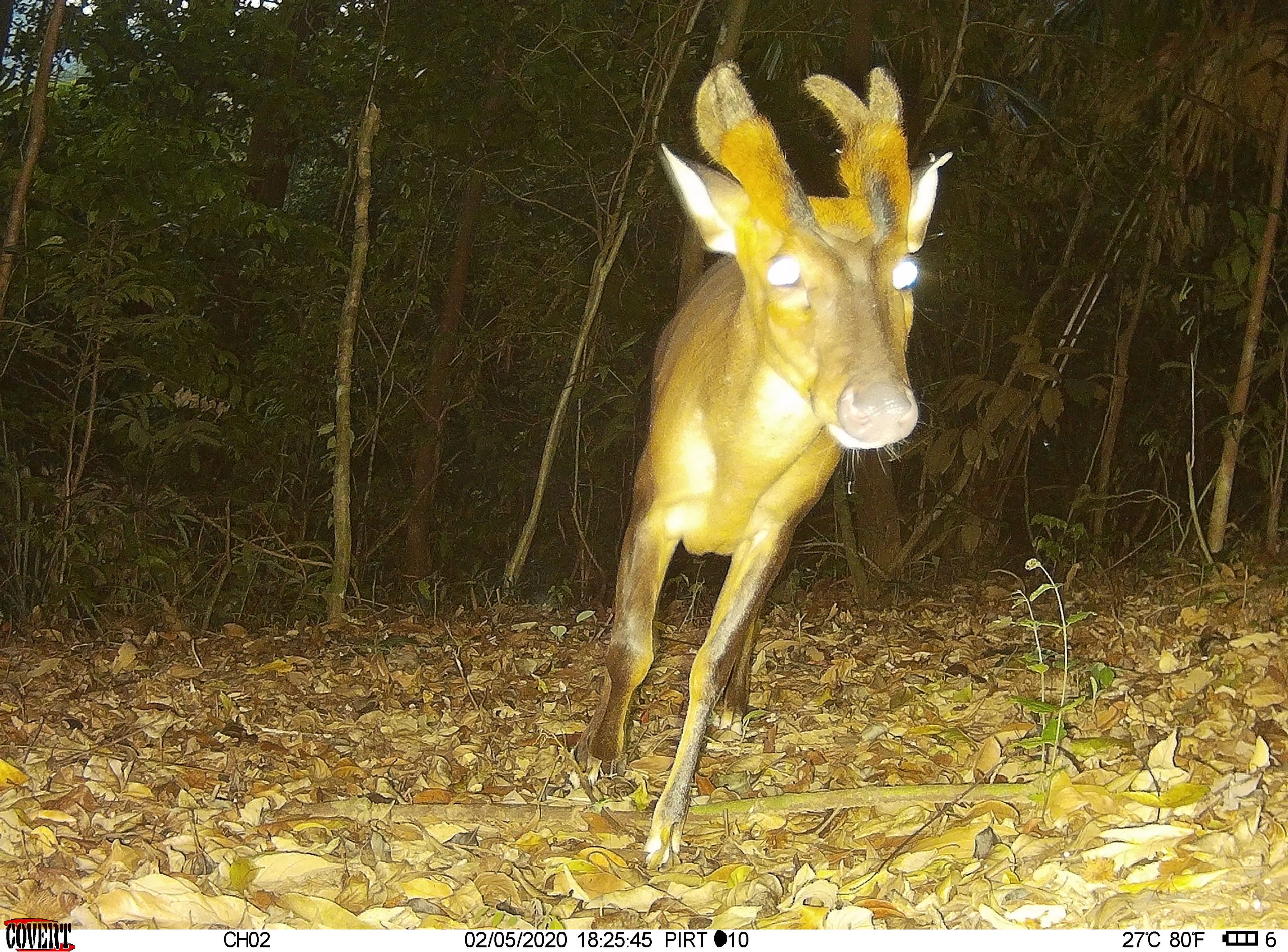
Eyes on the ground: Update from our wildlife monitoring program in Nakai – Nam Theun National Park
June 23, 2020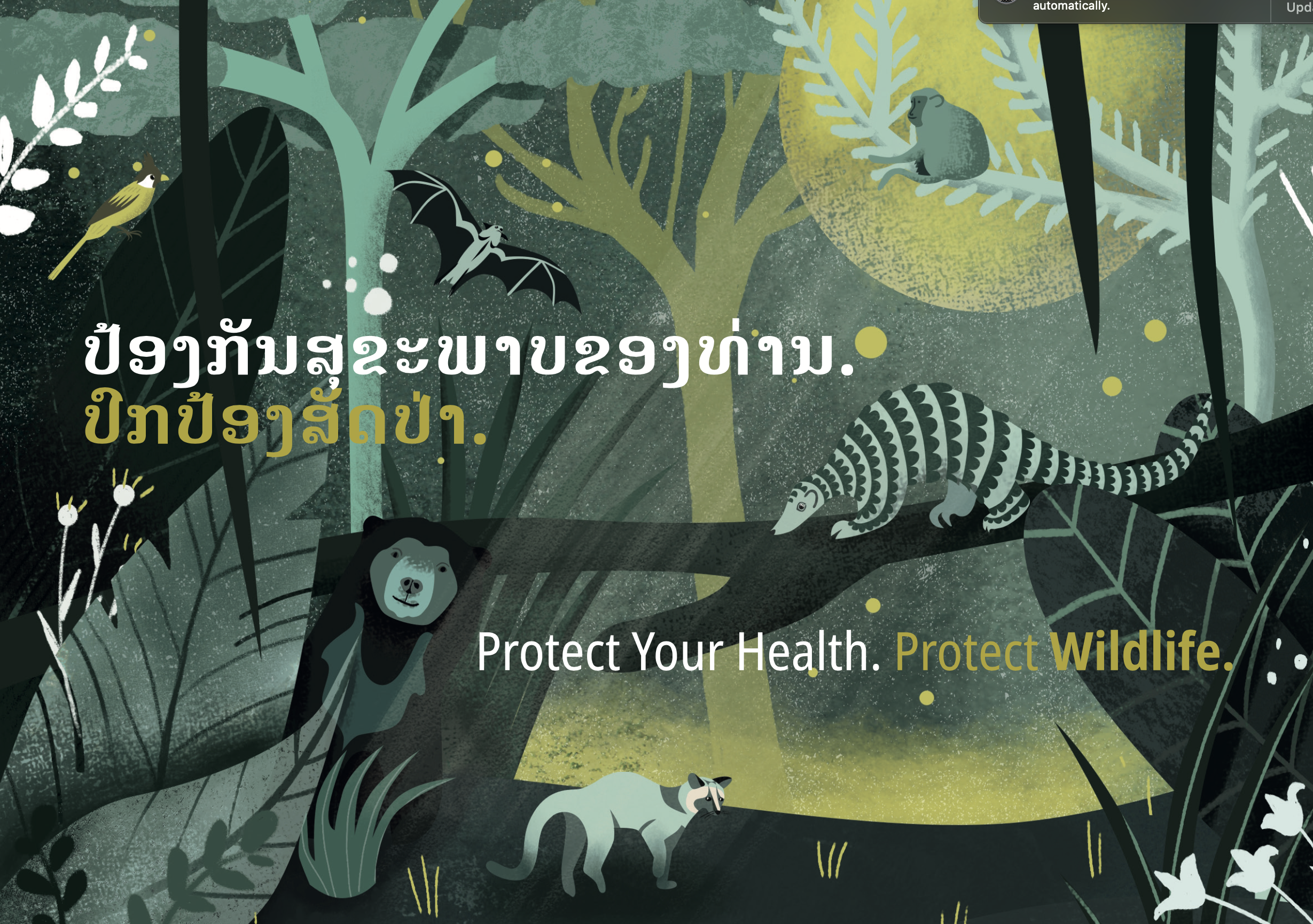
Protect your Health – Protect Wildlife: We produce an exclusive educative material to inform about zoonosis
September 19, 2020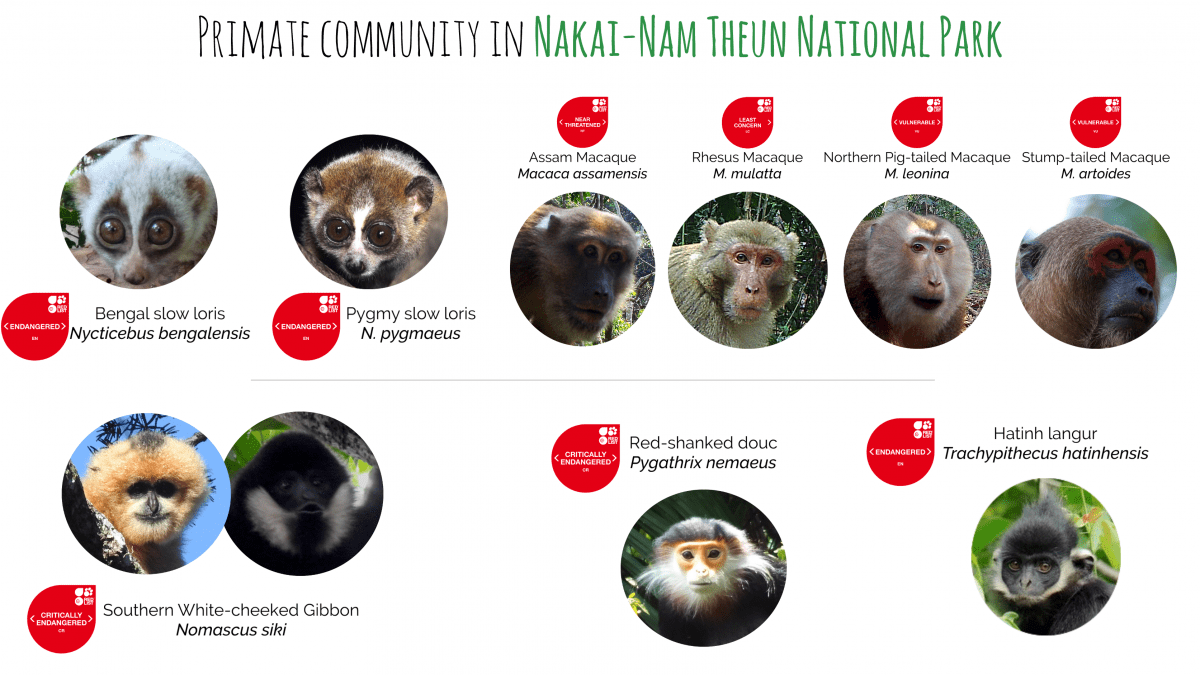
Last week, (July 2020) the IUCN Red List of Threatened Species was updated for all primate species (the last assessment dated back from 2008). In total, the conservation status of the world’s 493 described species of (non-human) Primates was assessed, following several years of Red List workshops by regions. The IUCN Red List categories reflecting the conservation status of species are assessed by experts including biodiversity conservation practitioners, biologists, researchers etc.
In 2015, Association Anoulak’s founder and director, Dr. Camille Coudrat, participated in the Asian Primates Red List Assessment Workshop to update conservation status of the region’s species.
In Laos, 18 Primate species are known (Table 1). For many of them, their Red List category was up-listed, meaning they are now considered to be at a higher risk of extinction compared to the last assessment 12 years ago. Of the 18 Primate species occurring in Laos, 16 are Globally Threatened (i.e. categorized as Critically Endangered, Endangered or Vulnerable). Primate species across Southeast Asia are indeed highly threatened from habitat loss and illegal hunting (live or dead primates are used for food; in traditional medicine practices; as pets; in the tourism industry; in research facilities).
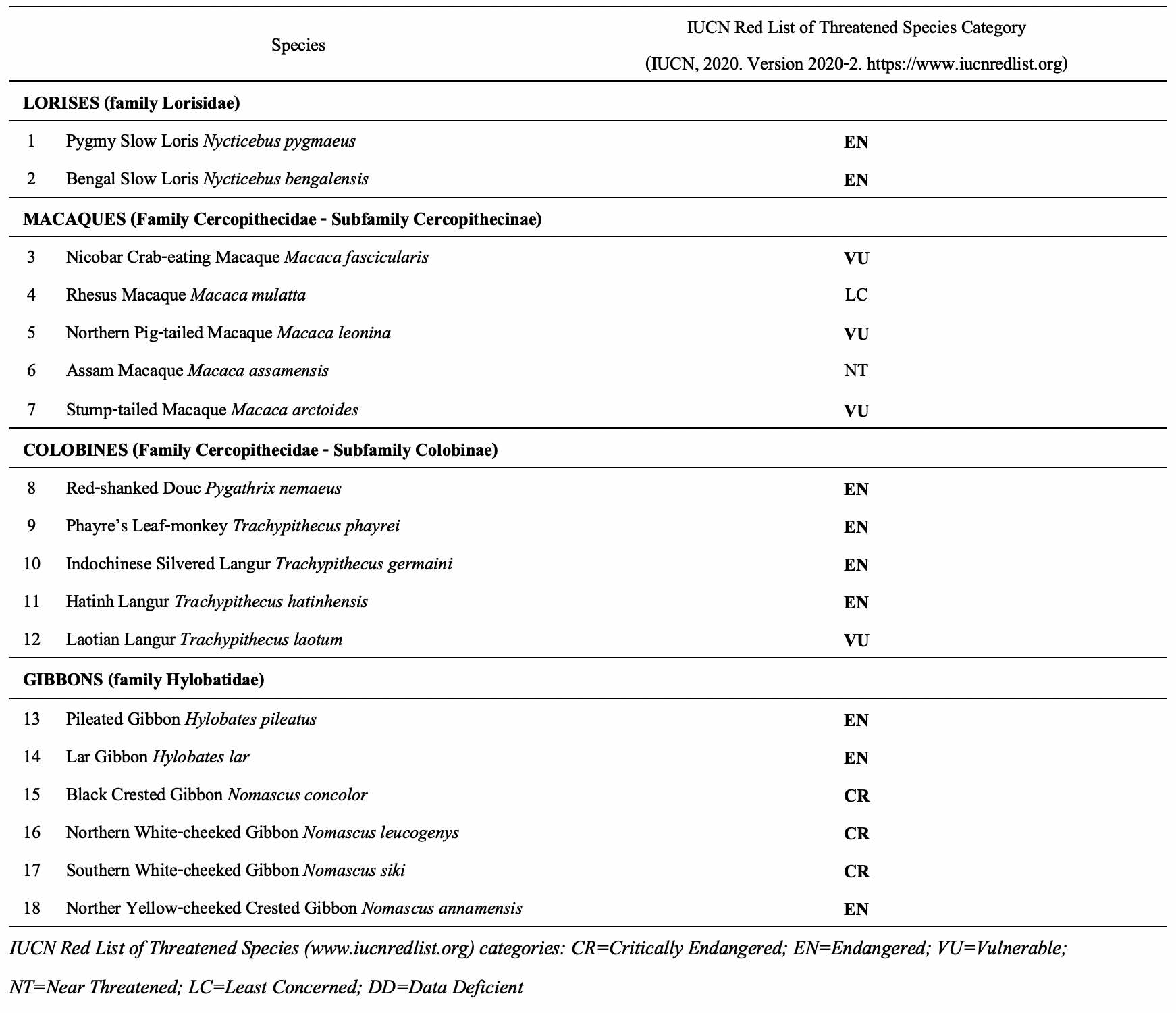
Table 1: Primate species in Laos and their global IUCN Red List category 2020
Of the 9 species occurring in Nakai – Nam Theun National Park—where most of Association Anoulak’s activities are based—7 are Globally Threatened, including notably two as Critically Endangered: the Red-shanked Douc and the White-cheeked Gibbon, on which Association Anoulak has been working for several years. (*note: uncertainties remain of the White-cheeked Gibbon taxa occurring within the national park: is has been suggested that both N. siki and N. leucogenys could occur, Association Anoulak is investigating this hypothesis)
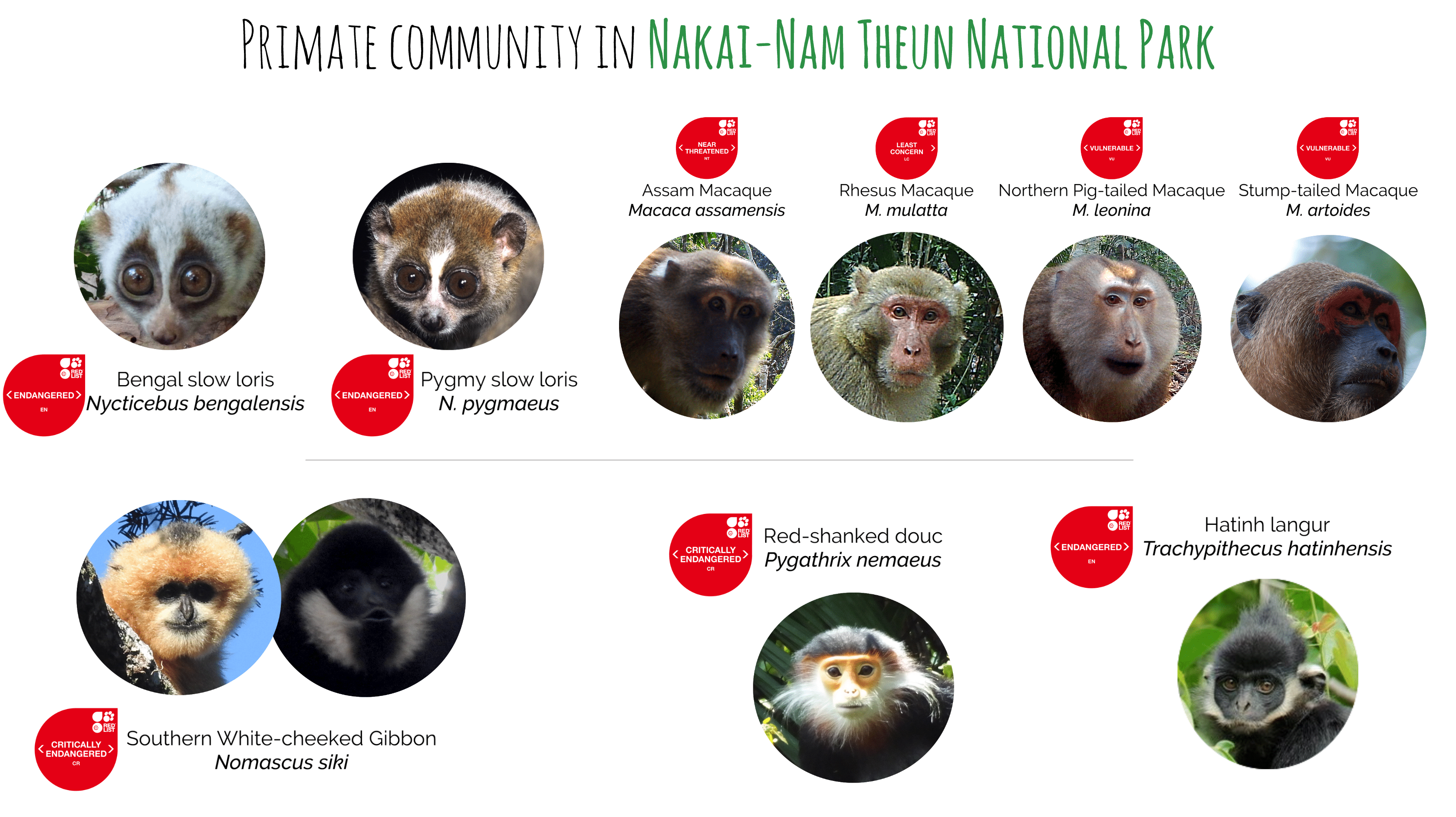
Primate community in Nakai – Nam Theun National Park and their IUCN Red List status 2020
Over the past few years, Association Anoulak’s director contributed to the assessment of several species in the IUCN Red List, including primates and other species.
Contribution to the IUCN Red List assessment for Primate species:
- Coudrat, C.N.Z., Quyet, L.K., Duc, H., Phiaphalath, P., Rawson, B.M., Nadler, T., Ulibarri, L. & Duckworth, J.W. 2020. Pygathrix nemaeus. The IUCN Red List of Threatened Species 2020: e.T39826A17941247. https://www.iucnredlist.org/species/39826/17941247. Downloaded on 15 July 2020.
- Nadler, T., Quyet, L.K., Rawson, B.M. & Coudrat, C.N.Z. 2020. Trachypithecus delacouri. The IUCN Red List of Threatened Species 2020: e.T22043A17958988. https://www.iucnredlist.org/species/22043/17958988. Downloaded on 15 July 2020.
- Pengfei, F., Nguyen, M.H., Phiaphalath, P., Roos, C., Coudrat, C.N.Z. & Rawson, B.M. 2020. Nomascus concolor. The IUCN Red List of Threatened Species 2020: e.T39775A17968556. https://www.iucnredlist.org/species/39775/17968556. Downloaded on 15 July 2020.
- Phiaphalath, P., Coudrat, C.N.Z., Roos, C. & Rawson, B.M. 2020. Nomascus concolor ssp. lu. The IUCN Red List of Threatened Species 2020: e.T39894A17991433. https://www.iucnredlist.org/species/39894/17991433. Downloaded on 15 July 2020.
- Nguyen, M.H., Coudrat, C.N.Z., Roos, C., Rawson, B.M. & Duckworth, J.W. 2020. Nomascus siki. The IUCN Red List of Threatened Species 2020: e.T39896A17968765. https://www.iucnredlist.org/species/39896/17968765. Downloaded on 15 July 2020.
- Rawson, B.M., Nguyen, M.H., Coudrat, C.N.Z., Roos, C., Jiang, X. & Duckworth, J.W. 2020. Nomascus leucogenys. The IUCN Red List of Threatened Species 2020: e.T39895A17969139. https://www.iucnredlist.org/species/39895/17969139. Downloaded on 15 July 2020.
- Quyet, L.K., Coudrat, C.N.Z., Phiaphalath, P., Nadler, T. & Covert, H. 2020. Trachypithecus hatinhensis. The IUCN Red List of Threatened Species 2020: e.T40789A17959646. https://www.iucnredlist.org/species/40789/17959646. Downloaded on 15 July 2020.
Contribution to the IUCN Red List assessment for other species:
- Timmins, R.J., Coudrat, C.N.Z., Duckworth, J.W., Gray, T.N.E., Robichaud, W., Willcox, D.H.A., Long, B. & Roberton, S. 2016. Chrotogale owstoni. The IUCN Red List of Threatened Species 2016: e.T4806A45196929. https://www.iucnredlist.org/species/4806/45196929. Downloaded on 15 July 2020.
- Willcox, D.H.A., Chutipong, W., Gray, T.N.E., Cheyne, S., Semiadi, G., Rahman, H., Coudrat, C.N.Z., Jennings, A., Ghimirey, Y., Ross, J., Fredriksson, G. & Tilker, A. 2016. Arctictis binturong. The IUCN Red List of Threatened Species 2016: e.T41690A45217088. https://www.iucnredlist.org/species/41690/45217088. Downloaded on 15 July 2020.
- Duckworth, J.W., Long, B., Willcox, D.H.A., Coudrat, C.N.Z., Timmins, R.J., Abramov, A.V., Chan, B. & Chutipong, W. 2016. Melogale personata. The IUCN Red List of Threatened Species 2016: e.T41627A45209826. https://www.iucnredlist.org/species/41627/45209826. Downloaded on 15 July 2020.
- Tilker, A., Timmins, R.J., Nguyen The Truong, A., Coudrat, C.N.Z., Gray, T., Le Trong Trai, Willcox, D.H.A., Abramov, A.V., Wilkinson, N. & Steinmetz, R. 2019. Nesolagus timminsi. The IUCN Red List of Threatened Species 2019: e.T41209A45181925. https://www.iucnredlist.org/species/41209/45181925. Downloaded on 15 July 2020.
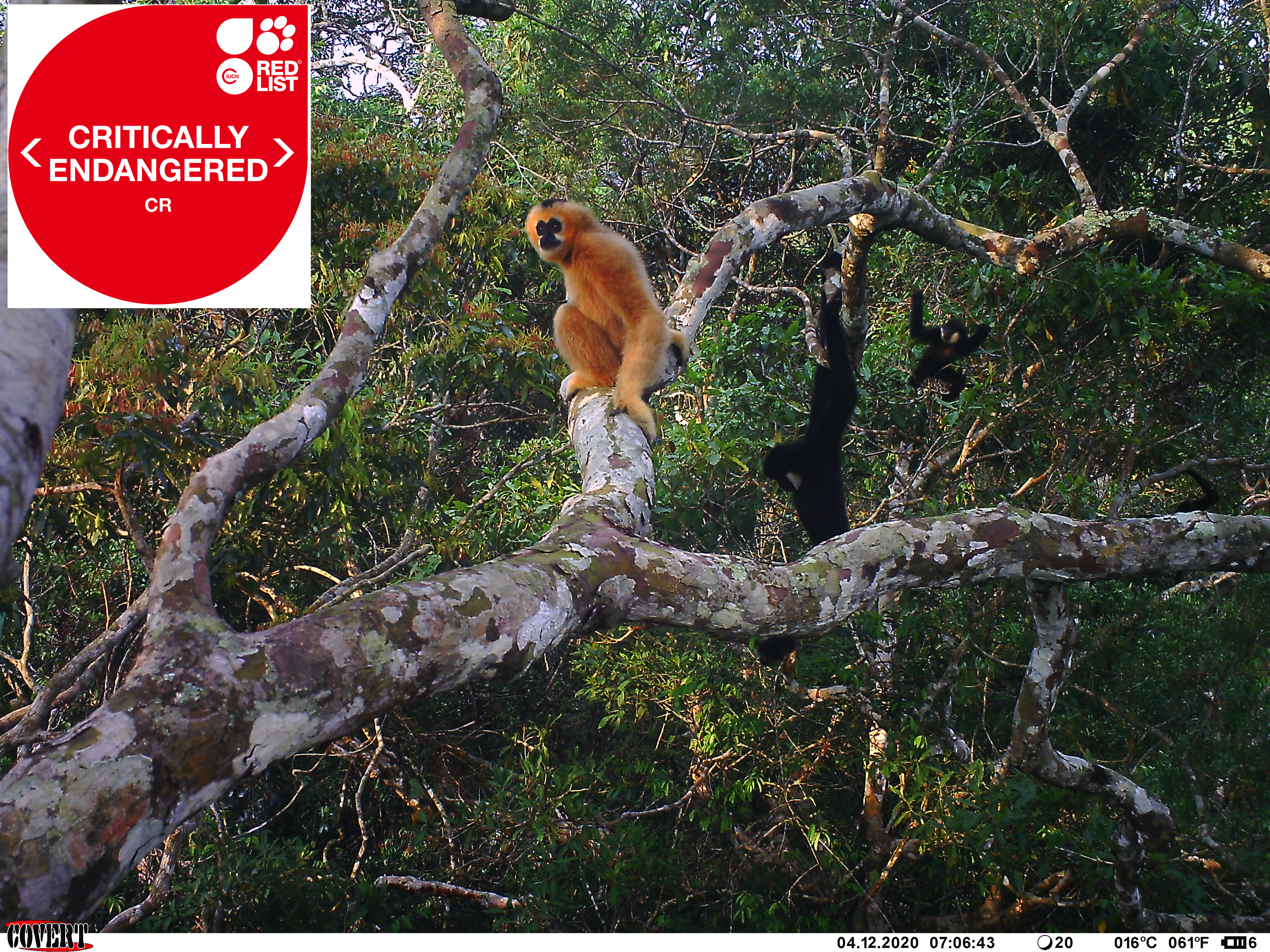
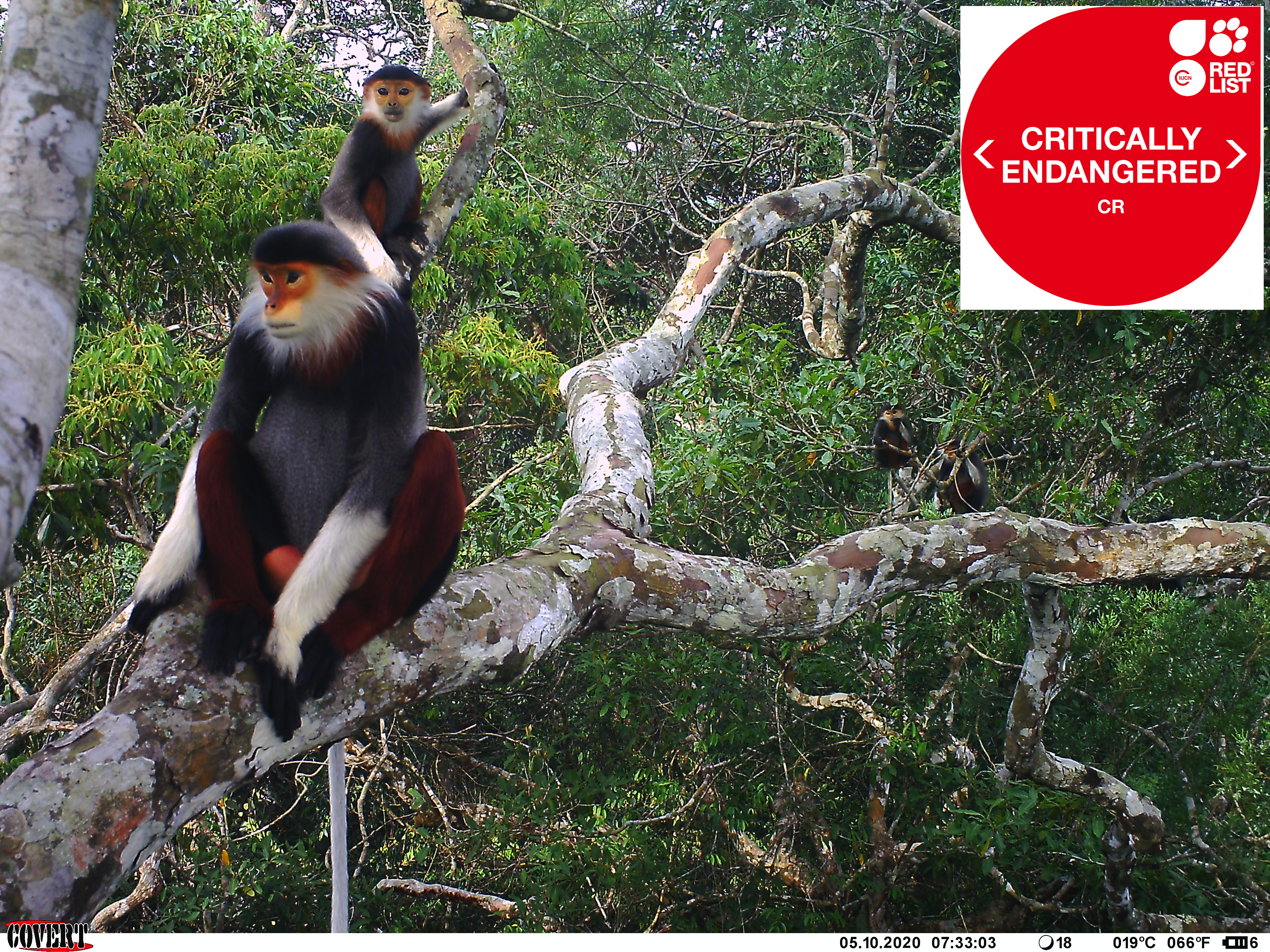
About the IUCN Red List of Threatened Species (IUCN, 2020. https://www.iucnredlist.org):
Established in 1964, the International Union for Conservation of Nature’s Red List of Threatened Species has evolved to become the world’s most comprehensive information source on the global extinction risk status of animal, fungus and plant species.
The IUCN Red List is a critical indicator of the health of the world’s biodiversity. Far more than a list of species and their status, it is a powerful tool to inform and catalyze action for biodiversity conservation and policy change, critical to protecting the natural resources we need to survive. It provides information about range, population size, habitat and ecology, use and/or trade, threats, and conservation actions that will help inform necessary conservation decisions.
The IUCN Red List threat categories are as follows, in descending order of threat:
-
- Extinct or Extinct in the Wild
- Critically Endangered, Endangered and Vulnerable: species threatened with global extinction.
- Near Threatened: species close to the threatened thresholds or that would be threatened without ongoing conservation measures.
- Least Concern: species evaluated with a lower risk of extinction.
- Data Deficient: no assessment because of insufficient data.
